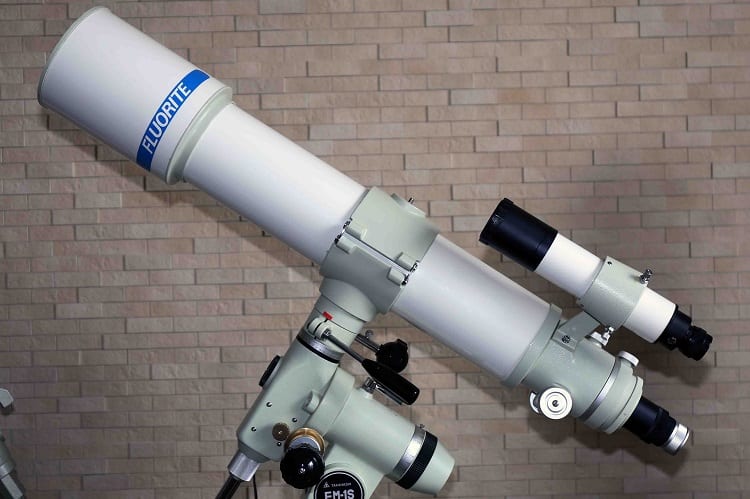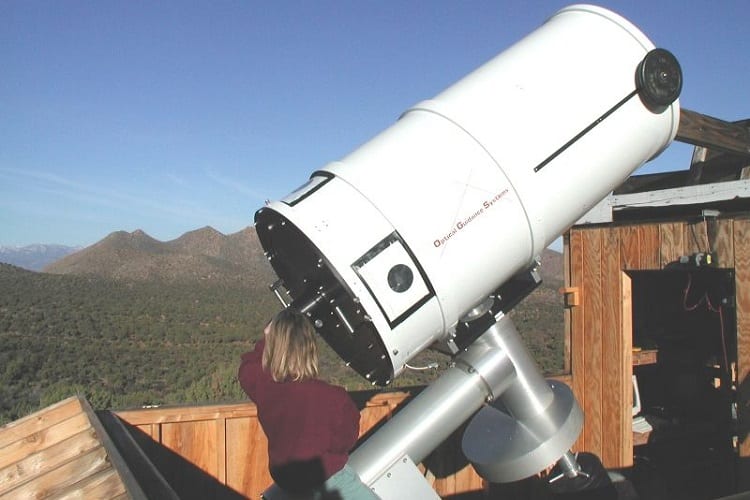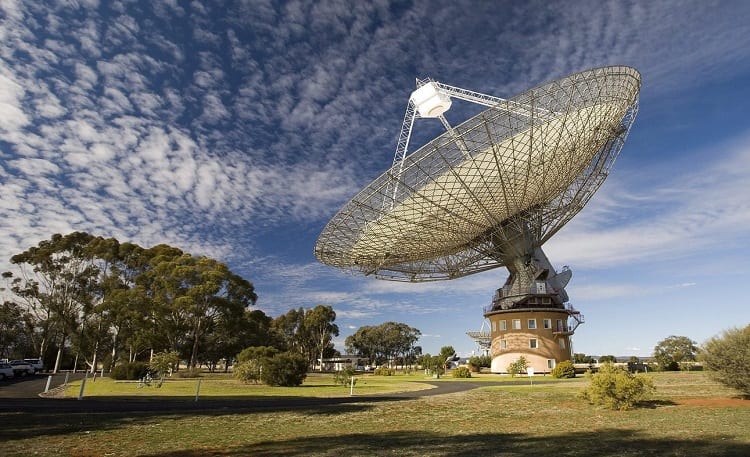When you’re in the market for a telescope to better view the night sky, you’ll need to figure out what type you should purchase.
One big decision you’ll need to make is if you should purchase a refractor or reflector telescope.
What’s the main difference between a refractor and reflector telescope?
Reflector telescopes are made up of mirrors, while refractor telescopes have lenses. That’s really the biggest difference between the two telescopes.
Which is better? A refractor telescope is better because it has a broader field of view. It is typically shorter and smaller than the reflector, which makes it easier to carry around. The downside to a refractor telescope is that you need to use a lens to focus the light and make the image visible.
That said, there are lots of other important things you should know about refractor vs reflector telescopes. Here’s your ultimate guide to both types of telescopes so you can find the best one for you.
If you’d like to see a graphical breakdown of the telescope type comparison, we got you covered:
Here is my review of refractor telescopes within my budget

Share this Image On Your Site
Contents
But first, what is the difference between reflection and refraction?
Reflection is-
When light strikes a mirror, it turns into another direction called reflection.
Example of Reflection – When you see your own face in the mirror.
Refraction is –
The term refraction of light refers to the change in direction and speed of light when it passes from one medium and into another.
Example of Refraction – Consider attempting to walk across air, water, and quicksand. What would be the difference in your movement?
What Is A Reflector Telescope?

This is a telescope that uses concave mirrors to enable light to travel down the tube where it becomes reflected up to another mirror that’s closer to the top of the tube. This, then, points the light into the telescope’s eyepiece so that the image can be magnified.
Reflector telescopes are usually called Newtonian reflectors, but you can find other types, such as the Cassegrain and Gregorian reflectors.
Reflector telescopes get their name because of how their main mirror reflects light back to a focus instead of refracting it, as Britannica reports.
This mirror has a parabolic or concave spherical shape and when it reflects the light it inverts the image. Let’s look at some pros and cons of reflector telescopes.
Pros
- Reflector telescopes have a large mirror to enable a larger amount of light to be collected. This makes them useful for astrophotography, especially when you want to take pictures of celestial objects on really dark nights.
- One of the biggest benefits of reflector telescopes, especially if you’re a beginner, is that they’re much more affordable than refractors.
- Reflector telescopes prevent chromatic aberrations, which is a problem that’s often experienced when you use a refractor telescope. Chromatic aberrations are colored parts that show up around stars. With a reflector telescope, the mirrors it contains produce light that remains color-accurate. This prevents the splitting of light.
- Since they have a shorter tube, these telescopes will be less expensive than refractor telescopes.
You can learn more about CHROMATIC ABERRATION in this excellent video :
Cons
- A reflector telescope can be quite bulky as well as heavy, which makes it difficult to transport and carry around. This can be a bit of a hassle, especially when you want to grab-and-go with your telescope or take it to a remote location.
- The telescope’s open-tube design is prone to problems such as humidity and dust that can reduce its lifespan or cause problems with how it functions.
- The reflector telescope is designed to produce an inverted image that can be frustrating for some people to deal with. It can especially prove tricky when you’re a beginner because it takes some getting used to.
What’s The Difference Between The Different Types Of Reflector Telescopes?
Earlier, we mentioned two other types of reflector telescopes: Cassegrain and Gregorian telescopes. Let’s look at what these have to offer.
1. Cassegrain Reflector Telescope
This telescope makes use of a second, curved, mirror that enables the light to be bounced back down the telescope tube where it can reach the eyepiece.
Some Cassegrain reflectors don’t contain a hole in their main mirror. Instead, they make use of a small plane mirror that’s located in front of the primary mirror. This reflects light outside the main tube of the telescope, as Britannica reports.
Cassegrain telescopes are usually smaller and more compact than Newtonian telescopes, which makes them easier to carry around, but otherwise, they have all the advantages that you’d find with Newtonian telescopes.
2. Gregorian Reflector Telescope
As for the Gregorian telescope, this contains a concave second mirror that’s located outside the prime focus of the telescope. This helps to reflect light through a hole in the primary mirror.
This type of telescope design was used for the Solar Maximum Mission, the Earth-orbiting space observatory, as Britannica reports. One of its main benefits is that it produces an upright image. It also doesn’t produce any chromatic aberrations.
Reflectors in general are great telescopes for when you want to view deep-sky objects, such as constellations. That said, they do take some time to learn. They sometimes can be a little tricky to set up and focus, so that’s something to bear in mind if you’re a beginner.
It’s interesting to note that nearly all telescopes that are used for research-grade astronomy are reflectors.
This is because these types of telescopes work in a wider spectrum of light, whereas some light wavelengths are absorbed when they move through a refractor or catadioptric telescopes.
What Is A Refractor Telescope?

The refractor telescope is sometimes called a refracting telescope. It contains two lenses on its front. One is to magnify what you see (the eyepiece) and the second one (the objective lens) has the function of collecting light.
The telescope also has a tube that has an eyepiece attached to it. How it works is that the light will go into the front lens and move down the telescope until it reaches the eyepiece lens. This is where it gets magnified.
You can use a variety of different lenses on the refractor telescope.
t’s worth bearing in mind this good tip when stargazing: you’ll need to use a less powerful eyepiece when you want to find a star in the sky and then a more powerful one once you’ve found it so that you can look at it more closely.
A refracting telescope gets its name from the term “refraction”, which means bending of the light when it moves from one medium and its density, such as air, to another, such as glass.
You’d use a refractor telescope when you want to look at the moon and planets, as well as double stars (a pair of stars that are viewed as being close together from Earth).
This is because these types of telescopes are suitable for viewing bright and large celestial objects. By choosing a high-quality telescope, you’ll be able to view celestial objects with high contrast and sharpness.
Pros
- Refractor telescopes don’t create central obstructions. This is because they have secondary mirrors that actually work to block some light that enters the tube and which can decrease the effectiveness of the aperture. This also makes the telescope provide you with sharper images of celestial objects.
- Another positive thing about refractors is that they maintain the alignment of the components in the optical path because the lenses are so well mounted. This makes these types of telescopes require much less maintenance, which is a bonus for beginners.
- Refractor telescopes are sealed at both sides of their tubes so they don’t let air into them. This makes the images you see much clearer and sharper.
Cons
- One of the drawbacks to consider about refractor telescopes is that they tend to be a bit expensive if you want to choose a model that has a bigger aperture.
- They’re not as powerful when viewing deep sky objects, such as nebulae or galaxies, so if those celestial objects are what you’re mainly hoping to photograph you might do better with a different type of telescope.
- They can be uncomfortable to use. This is because if you point your refractor telescope high into the sky you will have to crane your neck to be able to see what you’re trying to view. However, if you choose a telescope that has a prism adaptor, this will actually bend the light so that you can look through the telescope’s eyepiece more comfortably.
What Is A Catadioptric Telescope?

We’ve looked at both reflector and refractor telescopes, but maybe you’ve heard about catadioptric telescopes and wonder where they fit in.
This type of telescope is really an optical system that can produce images of various objects that are at an infinite distance. It makes use of lenses and mirrors.
So, you can say that the catadioptric telescope is a blend of both reflector and refractor telescopes. The word catadioptric when split means two things: catoptric means an optical system that makes use of curved mirrors and dioptric refers to lenses.
There are four main types of catadioptric telescopes. These are:
Schmidt-Cassegrain Telescopes
In this design, the telescope has a short tube with a concave spherical mirror, a corrector lens that has a full aperture, and a small convex secondary mirror.
Over the years, some changes have been made to the telescope to deal with problems such as coma (when points of light look comet-shaped) and field curvature (when flat objects look sharp in some parts of the frame but not across the frame).
Maksutov-Cassegrain Telescopes
You’ve probably heard about or seen, Maksutov-Cassegrain telescopes. They’ve been growing in popularity because of how they can increase the magnification of images and create sharper ones, too.
These telescopes have a short tube that makes them easy to use. They’re also great for beginners because of how they don’t need a lot of maintenance.
Schmidt-Astrograph Telescopes
Astrograph telescopes have shorter focal lengths than other telescopes. This, combined with their wide field of view, enables them to create sharp images. This is why they’re usually used to take pictures of the sky instead of just viewing celestial objects.
Schmidt-Newtonian Telescopes
These telescopes have shorter focal lengths, so they provide wider fields of view as compared to those that you’ll find in a Newtonian reflector telescope.
Here are the pros and cons of catadioptric telescopes.
Pros
- Catadioptric telescopes are lighter to use and they’re compact. This makes them easier to carry around. This also makes them really easy to set up.
- They’re cheaper to manufacture. This is because they have refractive elements that are easily reproduced.
- Catadioptric telescopes offer minimal distortions in your views of the night sky.
- They collect a lot of light so that you can produce wide field images of the stars and other celestial objects.
Cons
- These types of telescopes often require more alignment, which can make them feel a bit high maintenance, especially if you’re just starting out with astrophotography.
- Their moving parts are more complicated than what you’ll find in other kinds of telescopes, which could mean that they’re not suitable for beginners.
- Although they collect a lot of light, these telescopes can experience losing light because of how they contain multiple internal mirror systems.
What About Radio Telescopes?

While the above telescopes that we’ve featured are optical telescopes, there are also radio telescopes. These telescopes collect radio light waves, focus them, and then amplify them so that they can be analyzed.
Radio telescopes are used to study radio light that emanates from black holes, galaxies, and stars, as well as other celestial objects.
Radio telescopes have an antenna system and radio receiver that detects radio-frequency radiation between wavelengths of 10 meters and 1mm that gets released by a variety of celestial objects, like stars and galaxies.
They can also be used to send and reflect radio light off these celestial objects.
These telescopes are the largest type of telescope in the world because cosmic radio sources are very weak, as National Radio Astronomy Observatory reports. However, their size can also work against them because their large antennas can pick up radio interference.
The most common type of radio telescope is the radio reflector. It contains a parabolic antenna. This type of antenna works a bit like a television satellite dish because it directs incoming radiation onto an antenna.
In its most basic design, a radio telescope will have a receiver that’s placed at the focal point of the parabolic reflector. The signal gets carried by a cable all the way to a point close to the ground. Here it gets recorded as well as analyzed.
There are some drawbacks to this design, such as that it’s difficult to repair and maintain the system. In addition, weight restrictions reduce the number and size of individual receivers that can be installed on the radio telescope.
Radio telescopes are amazing and they have achieved some exciting discoveries in the sky! Here’s a rundown of some of the most incredible.
- In 1964, astronomer Gordon Pettengill used a radio telescope to theorize that the true rotation of Mercury around its axis was 59 days even though it had been said to be longer. This discovery opened the doors for more research to be done on the planet.
- In 1974, a binary pulsar was found with the use of radio telescopes. In case you didn’t know, a pulsar is a neutron star that rapidly rotates and emits pulses of radio waves as well as other types of electromagnetic radiation. A binary pulsar is a pulsar that has a neutron star or white dwarf within close proximity that orbits the pulsar in order to balance the pulsar’s gravitational direction and mass, as Sciencing reports.
- On the subject of pulsars, a millisecond pulsar was discovered for the first time in 1983 with the use of radio telescopes. It’s known as PSR B1937+21 and it spins approximately 641 times every second. This initial discovery has led to the discovery of hundreds more in the universe.
- In 1989, the Arecibo telescope located an asteroid that became known as 4769 Castalia. Excitingly, this was the first time that scientists made use of technology to produce an image of what it looked like. FYI, it was shaped like a peanut!
- In 2008, Arecibo found prebiotic molecules in a starburst that’s approximately 250 million light years away from Earth! This was given the name Apr 220 and substances such as hydrogen cyanide and methenamine were discovered on it. This is important because it relates to the debate of whether there’s life on other planets and/or in other solar systems, as Sciencing reports.
Related Questions
Can you use your telescope during the day?
You can view many celestial objects in the daytime, such as the moon and by putting a solar filter on the telescope you can even view the sun.
What should you look for when purchasing a telescope?
Some of the most important features include an eyepiece that provides a sharp image, a focuser that is smooth and precise, a mount that moves smoothly, and a telescope tube that stops moving after being touched to prevent shakiness and distortions.
Conclusion
If you want to buy a telescope, you’ve probably heard about refractor vs reflector telescopes. What are the main differences between them, and what are their pros and cons?
In this article, we’ve featured everything you need to know about these telescopes and which one you should purchase so that you now have a better idea of the perfect scope for your stargazing hobby.



